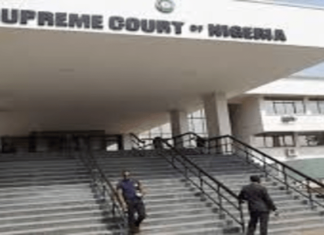By Lechi Eke
As we round up on the Victorian Era, we will look at the general features of their prose, especially, which includes themes, plot, style, structure, setting, etc.
Literature classified as the Victorian Literature are literary writings published during the reign of the English monarch called Queen Victoria who was born 24 May, 1819, and reigned from 1837 to 1901. So we have been looking at literary works published around this period – 1837-1901.
Theme
What were Victorians writing about? In every era, writers tried to capture situations around them. Although many authors set their stories in the past, they mostly ended up writing about their present. So it was with Victorian writers. The theme of marriage is explored in Victorian prose because in their time, marriage was a huge issue. It could be used to make political alliances, settle family feuds, and secure wealth including properties, positions, titles, and so on. It went beyond love. Marriage in this era was a strategic instrument used by families and individuals to make progress in life. If you remember, Queen Victoria married her cousin, Prince Albert, the son of her mother’s brother, Leopold, king of the Belgians. The young prince left Belgium to live in England. This union must have secured the two countries friendship, bilateral trade, peace, etc.
Social status affected Victorian marriages. One could climb a higher social ladder through marriage. Some who had title, but were broke, looked for people with money, and vice versa. In George Eliot’s Middlemarch, Rosamund Vincy thinks marriage with the young doctor, Tertius Lydgate, will help her climb the social ladder. In Jane Eyre, Jane marries above her, climbing into a higher social class. Victorians were class conscious.
Victorian writers examined other themes such as vocation, difficult lives portraying a moral lesson bordering on prudishness, using hard work, determination or resolve, and love, but always revealing progress/improvement. Also explored are themes of child treatment, industrialization, nature, science/evolution, the women issue, etc. Charles Dickens was very much concerned with child treatment, perhaps, because of what he suffered as a child; hence his many child-protagonists’ novels like Oliver Twist, David Copperfield, Great Expectations, etc.
Charlotte Bronte wrote about child treatment and the women issues in her novel, Jane Eyre, as well as social issues, class et al.
Eliot concerned herself with how the new industrialization, development in medicine affected rural people. Of course she portrayed the power of choices, both in marriage and in vocation.
Thomas Hardy showed his concern not only for urbanization, but the economic and social development in his country (Britain) during this era. He delved into nature in his Return of the Native. He looked at how the environment affected people who lived in them. Some Victorian authors towed the line of Charles Darwin who was their contemporary, who newly then published his book on evolution titled Origin of Species (1859).
So some Victorian authors explored science, nature, survival in a world where many odds were against man while some examined the conflicts between science and religion as seen in Middlemarch represented by Lydgate and Bulstrode.
Structure
The Victorian Literature was written mainly in narrative poetry, the novel form, magazines and periodicals.The prose is voluminous running into tens of chapters and hundreds of pages. They were published in volumes, parts or series, usually in newspapers or magazines. This mode of publication resulted in the novels being cliffhangers; that means published in series which end in suspense (we know that Charles Dickens’ novels are full of mysteries, sensations and suspense, in fact in the mid 19th century when he went on reading tours to America, women were fainting at his readings!). For example, some Charles Dickens’ novels were published in a weekly magazine owned by him.
Serializing a novel makes it cheaper for a reader, and boosts sales for the publisher. Dickens’ A Tale of Two Cities was published in 31 weekly installments that ran into 45 chapters on 341 pages. David Copperfield – 64 chapters on 684 pages. Jane Eyre published in three volumes, boasts of 38 chapters on 592 pages. Thomas Hardy’s Return of the Native has 464 pages, while Middlemarch is a daunting 844 pages in 79 chapters! They are usually thick-plotted (having multiple plots) and many characters.
It is needless to say that Victorian prose is usually a long narration. Also, the structure (exposition, complication, crisis, climax and resolution) of Victorian prose is plotted in a way that the reader cannot lose interest or get tired. Victorian readers always longed to know what happened next though it took a week or a month!
Style
The novel reached its peak in the Victorian era. This could be attributed to a number of factors such as, the target audience or readership which shifted from the aristocrats to the middle class, and this was because, there had become a middle class. The Victorian novel is aimed at entertaining the middle class.
This shift in audience or readers affected the language of Literature; it becomes conversational, run of the mill or plebian, shunning the flowery style of 18th century prose. The high and snooty languages of past eras were done away with.
Focus on details is a Victorian style which does not only centre on physical things but also on the intricate struggles going on in their characters’ minds and lives. See an excerpt from Charlotte Bronte’s Jane Eyre:
“I never liked long walks, especially on chilly afternoons: dreadful to me was the coming home in the raw twilight, with nipped fingers and toes, and a heart saddened by the chidings of Bessie, the nurse, and humbled by the consciousness of my physical inferiority to Eliza, John, and Georgiana Reed.”
During this period, the novel usurps the place of importance from poetry in the English Literature canon. New ways of reading evolved as magazines and periodicals were published. And new ways of writing opened up as novels were serialized in magazines and newspapers making it easily available to the reading public, and at a cheaper price.
Plot
The Victorian prose is not only realistic in language but also in plot, describing contemporary life, reproducing the Victorian lifestyle of chauvinism, class distinction, and morality in minute details.
What are the conflicts in Victorian stories? These came from what Victorians were mostly concerned about, and the complex ways they affected them, or how those things complicated their lives. These were things like class or social status, marriage, vocation, politics, industrialization, and progress – (women acquiring a voice – the Reform Act, etc.) are you blue blooded, or a merchant’s daughter/son? Are you a working class? Are you going to inherit money or property? Do you own your own carriage? Where do you live, a castle, manor or cottage?).
Victorian prose depicts life as it was in their days: difficult, filled with struggling, working people struggling for survival, religious attitude, perseverance.
Life expectancy was low; many parents died prematurely because of hardship, poverty, poor sanitation, etc. Many orphaned children ended up in workhouses like Oliver Twist, some in relations’ houses where they encountered harsh treatment like Jane in Charlotte Bronte’s Jane Eyre and Dickens’ Pip in Great Expectation; also in charity schools where they were maltreated like Jane Eyre.
Victorian children were considered cheap labour, so they were in high demand for all types of jobs, such as factory work, clothing and hat making, street sweepers, mining, chimney sweeps, farming, textile mills, even prostitution, and being servants. So the mistreatment of children, which included child labour in factories and at other places of work, and maltreatment of orphans are depicted in Victorian prose.
These issues gave the Victorian prose multiple plots, many characters and dense complications. For example, Emily Bronte’s Wuthering Heights is so thickly plotted with many complications.
Victorian poetry focuses on realism, the masses, pessimism, science and technology, questioning to God, sense of responsibility, morality, interest in medieval myths and folklore. It also features the use of sensory devices and imagery, sentimentality, humour, dramatic monologue, presentation, etc.
The thick plots and many characters in Victorian prose, I perceive a reflection of the period’s population explosion, urbanization, etc.
Progress
Progress in the Victorian era was felt in every sphere: politics – the British Empire expanded; science – Charles Darwin published his book on evolution; technology – telephone invention; new railroads; sewage system, urbanization, industrialization, etc. All these are captured in the period’s Literature.
Progress is a constant in Victorian Literature copying real Victorian age because the British Empire reached its peak in expansion, and development peaked, compared to what obtained in the past. All these were captured in their literary writing culminating in the triumph of right over wrong, which is morally speaking, a great progress.
Setting
Victorian proseis usually set in the past as this period’s writers tried to reclaim the past. Some prose but mainly Poetry at that time showed reminiscence of the classical and medieval periods telling gallant stories of heroes, knights and acts of chivalry like Tennyson’s Idylls of the King.
Place – where events happen in Victorian prose can be in the developed south (London) or the undeveloped bleak north – of course the setting affects the mood. A Victorian story can be set in a manor, cottage or, or all these places simultaneously presenting conflicts and complications.
Objects of setting matter in stories – workhouse, fancy handkerchiefs, silk raiment, old frocks; manor; factory; farm, etc. carriage, trekking, horses, etc.
Circumstances are of great importance too – is a young woman or man expecting an inheritance? Is he/she without a penny to his/her name? But it was generally understood that a woman should aspire to marry and be contented irrespective of her heart, as seen in this 19th century quote: “The education of female ought, most assuredly, to be competent, in order that she might enjoy herself, and be a fit companion for man.”
Characterisation
Characters in Victorian Literature are working people, the masses, and children – maltreated and privileged; titled men and women, the middle class, and the peasants. Everyone is represented.
Because work for unmarried Victorian women were teaching and being governesses or companions of rich widowed women, so unmarried female characters in Victorian prose are thus engaged.













